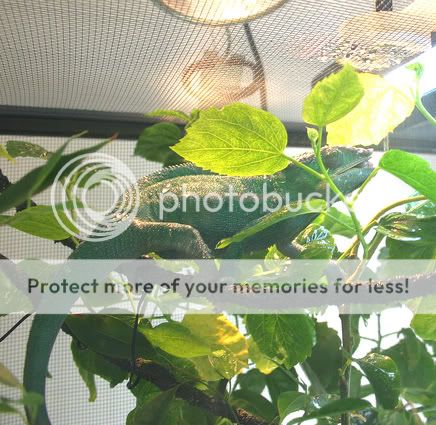Chameleon Company
Avid Member
As with so many things regarding chameleon husbandry, the husbandry measures we provide, in hopes of replicating all that is good about their natural environment, end up being skewered by combinations of 1) what is do-able with the means we have; 2) what is marketed towards the keeper's aesthetics; 3) our concerns to manage the system (often leading to over-management); and 4) bad info.
In this instance, I obviously take issue with the notion that water needs to be regularly put into a chameleon's eyes as part of a normal cleaning mechanism. Not that you stated it that way, but taking all that has been said over the years in the forums, I am making that the consensus notion that is often trotted out. In your case, you spray directly onto your chameleon 3 times a day, not directly into its eyes, but still on the animal. I could make a case that such is not natural, at least with regard to the frequency of getting wet, and possibly the means of delivery. Where it had been noted, by you or another, that getting water into the chameleon's eyes so that it can "clean out dirt and dust", or however it was put, I would suggest that might also be a backwards notion, in that it might better accomplish putting debris and dust into the chameleon's eyes. I have hand flushed chameleon eyes with some of the best vets in the country. Sterile eye rinse was used, and the process was very much governed by wanting to minimize contamination with dust and debris in what we felt was a very unnatural process.
I want to be sure that my words are not confused. I am not saying that the wiping of the eyes by a chameleon, on a branch, etc., is not "natural". We wipe our own eyes for whatever reason. I submit though that it is usually a reaction, not a pro-action, and that the animal may be reacting to an temproary aggravation. Barring a medical issue, we do not need to assist the chameleon in washing its eyes. While it is also quite normal for a chameleon to get wet once every 1-2 days, that is not to say that it needs to have water sprayed directly on it to maintain humidity, or into its eyes to keep them clean. Manifest problems can definitely arise from a chameleon that is too wet too much of the time.
I am not offering such and suggesting that your chameleon is at risk. Your chameleon may be the happiest chameleon in the world . with a great and attentive keeper. If nothing else, maybe some readers here will aim less for their chameleon's eyes when they provide moisture, and trust that the chameleon is equipped to best take care of itself given conditions most natural to its optimal wild existence. Thanks.
. with a great and attentive keeper. If nothing else, maybe some readers here will aim less for their chameleon's eyes when they provide moisture, and trust that the chameleon is equipped to best take care of itself given conditions most natural to its optimal wild existence. Thanks.
In this instance, I obviously take issue with the notion that water needs to be regularly put into a chameleon's eyes as part of a normal cleaning mechanism. Not that you stated it that way, but taking all that has been said over the years in the forums, I am making that the consensus notion that is often trotted out. In your case, you spray directly onto your chameleon 3 times a day, not directly into its eyes, but still on the animal. I could make a case that such is not natural, at least with regard to the frequency of getting wet, and possibly the means of delivery. Where it had been noted, by you or another, that getting water into the chameleon's eyes so that it can "clean out dirt and dust", or however it was put, I would suggest that might also be a backwards notion, in that it might better accomplish putting debris and dust into the chameleon's eyes. I have hand flushed chameleon eyes with some of the best vets in the country. Sterile eye rinse was used, and the process was very much governed by wanting to minimize contamination with dust and debris in what we felt was a very unnatural process.
I want to be sure that my words are not confused. I am not saying that the wiping of the eyes by a chameleon, on a branch, etc., is not "natural". We wipe our own eyes for whatever reason. I submit though that it is usually a reaction, not a pro-action, and that the animal may be reacting to an temproary aggravation. Barring a medical issue, we do not need to assist the chameleon in washing its eyes. While it is also quite normal for a chameleon to get wet once every 1-2 days, that is not to say that it needs to have water sprayed directly on it to maintain humidity, or into its eyes to keep them clean. Manifest problems can definitely arise from a chameleon that is too wet too much of the time.
I am not offering such and suggesting that your chameleon is at risk. Your chameleon may be the happiest chameleon in the world



